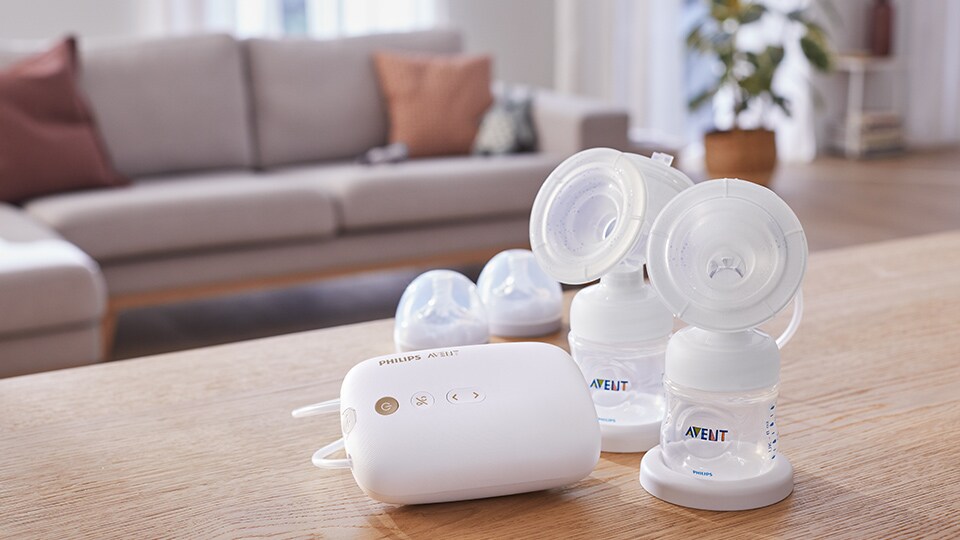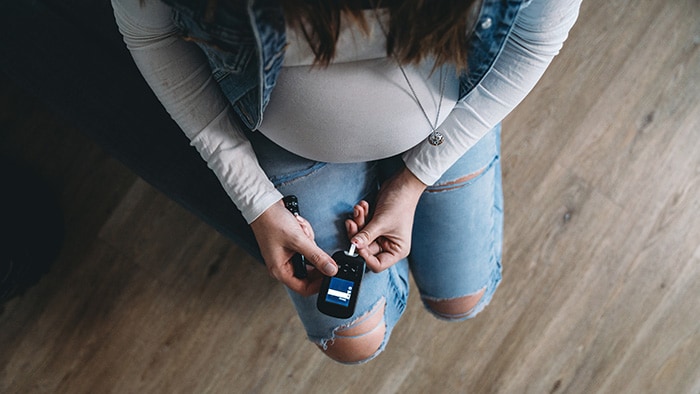March 2021
Low milk production? Power pump!

Power pumping is often used to help breastfeed weak babies, who are unable to suckle breasts sufficiently. This technique is also recommended when mothers are separated from their babies, or for premature babies.
Stimulating prolactin
However, it’s not surprising, that suckling or nipple stimulation is the most effective way to stimulate prolactin production1. This is where power pumping comes in.
Prolactin plays a key role in such things as the developments of breasts, and is responsible for lactation. Other parts of the body – including the uterus and mammary glands – also produce prolactin, and can be affected by scent, stress or light.
Mimicking baby
It’s all about a rhythm of pump/rest/pump/rest/pump. Pumping over and over again prevents levels of prolactin from dropping after breastfeeding. This mimics the way babies (especially newborns) cluster feed during growth spurts, as they eat several times in a row. To ensure milk production builds up as desired, it’s best to start pumping as soon as possible. Research shows that mothers who pump within 1 hour of birth produce much more milk 3 weeks later on. According to Hill & Aldag in their 2005 study2, “milk volume and pumping frequency on Day 4 after birth are significant predictors of milk supply at 6 weeks.”
By repeatedly pumping, the mother’s body is signaled to naturally produce more milk. As the breasts are relieved of milk, they make room for new milk production.
Short versus long sessions
Sessions can range from 25 to 65 minutes, but the less time a session takes, the more often mothers need to power pump per day. A single, long session per day is best option. However, if mothers cannot take the time for that, they should maintain a series of short power pumping sessions. For example, 6 short 25-minute sessions per day (5 minutes pumping, followed by 5 minutes of rest) will activate the breasts more often, for better results.
There are several ways mothers can schedule their power pumping sessions. In general, power pumping should take place immediately after breastfeeding, at least once a day. If this isn’t possible wait to power pump until after the following feeding, otherwise mom won’t have enough milk for the baby’s next feeding.
| Frequency and duration of pumping sessions with a double electric breastpump | | | | |
| Pump | 5 min | 10 min | 20 min | 15 min |
| Pause | 5 min | 10 min | 10 min | 10 min |
| Pump | 5 min | 10 min | 10 min | 15 min |
| Pause | 5 min | 10 min | 10 min | 10 min |
| Pump | 5 min | 10 min | 10 min | 15 min |
The right pump and shield
With a good understanding what triggers the production of prolactin, during the rest period we recommend that mothers take full advantage of the wonderful scent of their newborn. Sniff that beautiful baby, and enjoy skin-to-skin contact. If the baby isn’t available, the scent from an item of their clothing will help, as will a photo or video of the baby. It’s also important to drink plenty of water to rehydrate. It may take several days to notice an increase in milk production. Of course, every mother is different, so the results will differ, too. Most important is the ability to provide babies with the only milk in the world that has been especially produced for them. By their own mother.
A double electric breast pump is the easiest way to achieve a good power pump session. It helps to massage the breasts before pumping – and it’s important that the breast pump shield fits well. And, of course, mothers must feel at ease and comfortable. After all, stress inhibits hormones.
Share this article:



